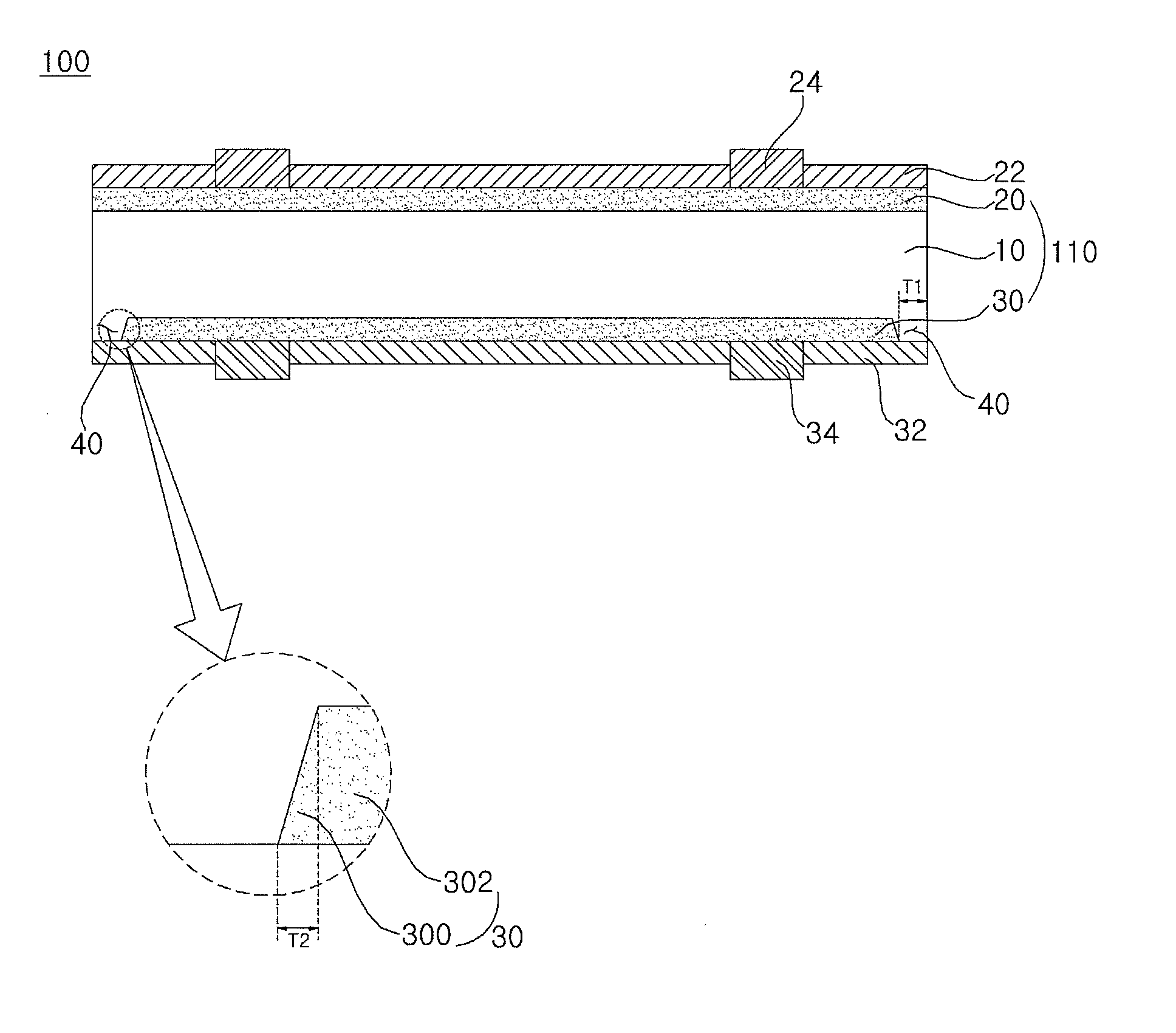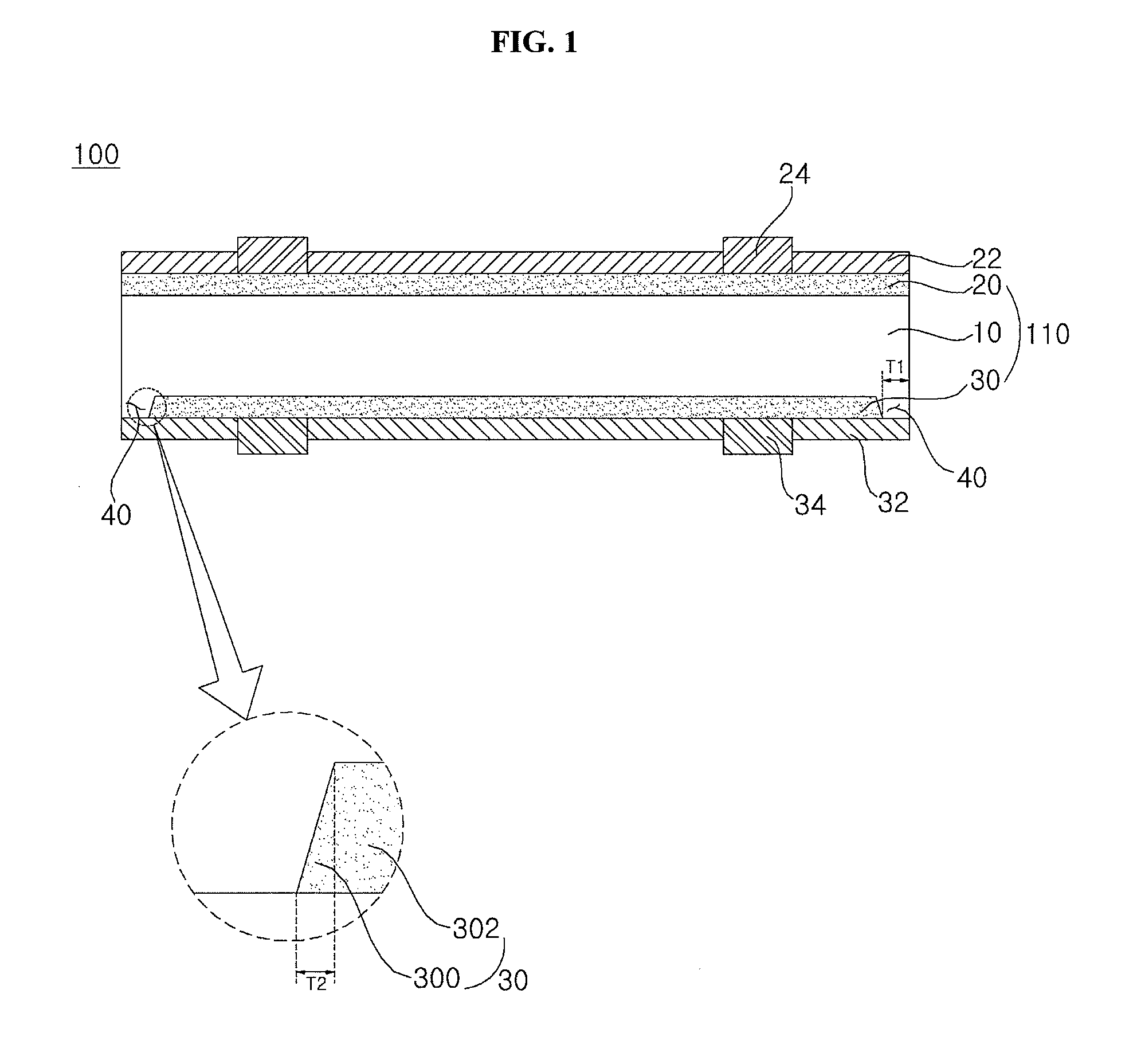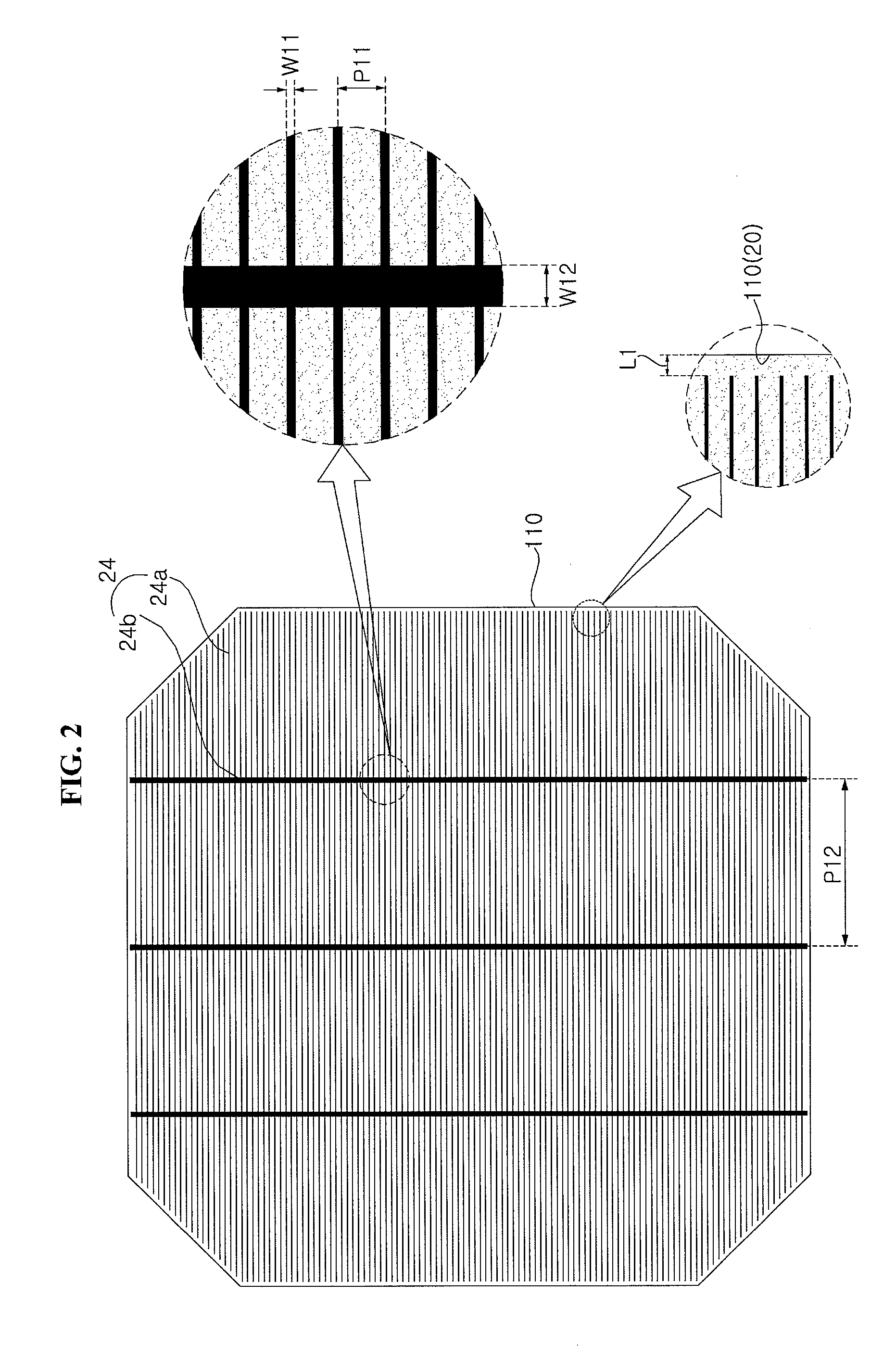Solar cell and method for manufacturing the same
- Summary
- Abstract
- Description
- Claims
- Application Information
AI Technical Summary
Benefits of technology
Problems solved by technology
Method used
Image
Examples
example 1
[0109]An n-type semiconductor substrate was prepared. A mask having a frame shape covering an edge of the semiconductor substrate was placed on a back surface of the semiconductor substrate and phosphorous (P) was ion-implanted to form a back electric field region and an isolation portion. At this time, a width of the portion of the mask covering the edge of the semiconductor substrate was 0.75 m (750 μm).
[0110]At a distance of 0 μm, 325 μm, 700 μm, 800 μm and 950 μm from the edge of the semiconductor substrate in Example 1, a doping concentration and a junction depth were calculated and / or measured. Results are shown in Table 1. In addition, the doping concentration is shown in a graph of FIG. 14 and the junction depth is shown in a graph of FIG. 15.
TABLE 1Distance from edgeDoping concentrationJunction depth[μm][n / cm2][nm]06.56 × 1011653251.11 × 1014907.57002.61 × 101410398005.61 × 101520639505.85 × 10152172
[0111]As can be seen from Table 1 and FIGS. 14 and 15, at a distance of 700...
example 2
[0114]An n-type semiconductor substrate was prepared. A mask having a frame shape covering an edge of the semiconductor substrate was placed on a back surface of the semiconductor substrate and phosphorous (P) was ion-implanted to form a back electric field region and an isolation portion. At this time, a width of the portion of the mask covering the edge of the semiconductor substrate was 0.5 mm. In addition, boron (B) was ion-implanted on the front surface of the semiconductor substrate to form an emitter region. An anti-oxidation film and a first electrode were formed on the front surface of the semiconductor substrate, and a passivation film of the semiconductor substrate was formed to manufacture a solar cell.
example 3
[0115]A solar cell was manufactured in the same manner as in Example 2, except that the width of the portion of the mask covering the edge of the semiconductor substrate was 1.0 mm.
[0116]Reverse current (at −12V) of the solar cells manufactured in accordance with Examples 2 and 3 were measured and results are shown in Table 2.
TABLE 2Reverse current [A]Example 20.62Example 31.74
[0117]As can be seen from Table 2, the solar cells in accordance with Examples 2 and 3 have considerably low reverse currents.
PUM
 Login to View More
Login to View More Abstract
Description
Claims
Application Information
 Login to View More
Login to View More - R&D
- Intellectual Property
- Life Sciences
- Materials
- Tech Scout
- Unparalleled Data Quality
- Higher Quality Content
- 60% Fewer Hallucinations
Browse by: Latest US Patents, China's latest patents, Technical Efficacy Thesaurus, Application Domain, Technology Topic, Popular Technical Reports.
© 2025 PatSnap. All rights reserved.Legal|Privacy policy|Modern Slavery Act Transparency Statement|Sitemap|About US| Contact US: help@patsnap.com



